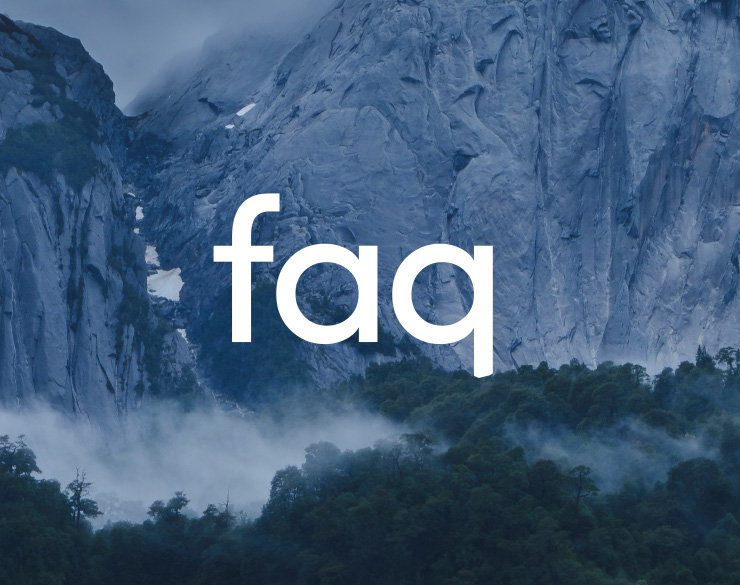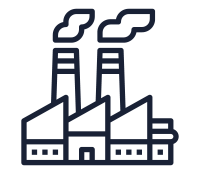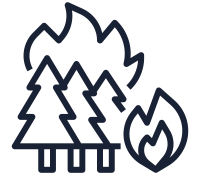About the campaign
Conserva Puchegüín is an initiative driven by five organizations with the goal of acquiring and implementing a conservation plan to protect 133,000 hectares located in the Cochamó commune, in the Los Lagos region.
The organizations behind Conserva Puchegüín reached a purchase agreement with the current owners, with the aim of conserving its biodiversity, promoting sustainable development, and ensuring ecological connectivity with other protected areas.
The Conserva Puchegüín campaign was launched in April 2024 and aims to raise USD 78 million within two years through the mobilization of donors at both national and international levels.
Check the progress of the campaign at https://conservapucheguin.org/en/progress
The organizations that make up the alliance are Puelo Patagonia, The Nature Conservancy (TNC), Freyja Foundation, Patagonia Inc., and Wyss Foundation. Puelo Patagonia brings deep knowledge and solid experience in Cochamó, combined with a global perspective, a successful track record of large-scale conservation projects, and fundraising expertise from international organizations.
About Puelo Patagonia
It is a non-profit, territorial organization that has been working for 11 years to safeguard the natural and cultural heritage of the Cochamó commune.
Among its most important projects are securing the declaration of 11,400 hectares of the Cochamó Valley as a Nature Sanctuary; regulating mass tourism to safeguard the territory; conducting permanent monitoring of native wildlife; implementing a rural volunteer program that highlights the cultural richness of rural life; and bringing the request to the General Comptroller for the Río Puelo to be declared a Water Reserve. For more information about Puelo Patagonia, visit www.puelopatagonia.cl or on Instagram @puelopatagonia
About Freyja Foundation
A private philanthropic foundation that develops and supports innovative, scalable, and sustainable conservation projects with the aim of preserving and restoring natural areas and combating the climate crisis. Its work includes the protection of degraded or threatened carbon sinks, the restoration of biodiversity, and the promotion of local community development. Freyja has supported conservation projects in Chile since 2018. One of its most important contributions to the protection of the Cochamó Valley was the purchase of 309 hectares of high ecological and cultural value at the entrance to the valley to prevent land subdivision, which will be dedicated to conservation. For more information about Freyja Foundation, visit freyjafoundation.org or @freyja_foundation on Instagram.
About The Nature Conservancy (TNC)
A global environmental organization, non-profit, that works to conserve the lands and waters on which all life depends, to create a world in which both people and nature can thrive. Founded in the United States in 1951, The Nature Conservancy has grown to become one of the most effective and far-reaching environmental organizations. Present in Chile for over 20 years, TNC manages and leads the conservation of the Valdivian Coastal Reserve, of invaluable natural and cultural wealth, through a co-management model with local communities.
For more information about TNC’s work in Chile, visit nature.org/chile or @tnc_chile on Instagram.
About Patagonia
Founded by Yvon Chouinard in the ’70s, Patagonia is an outdoor clothing company based in Ventura, California. As a certified B Corporation and founding member of 1 % for the Planet, the company is internationally recognized for the quality of its products and its environmental activism, as well as for its contributions of nearly $200 million to environmental organizations. Its unique ownership structure reflects that the Earth is its only shareholder: profits not reinvested in the business are paid out as dividends to protect the planet.
About Wyss Foundation
It is a private philanthropic foundation dedicated to supporting innovative and lasting solutions that improve lives, empower communities, and strengthen connections with the Earth. Since its establishment in 1998, it has helped governments, Indigenous communities, and other charitable organizations protect over 40 million hectares of land and more than 3 million square kilometers of ocean. For more information about The Wyss Foundation, visit www.wyssfoundation.org or follow @WyssFoundation on X.
The territory
The Fundo Puchegüín is a private property of 132,879 hectares located in the Cochamó commune, in the Los Lagos Region.
Iconic places of the Cochamó Valley — such as the Anfiteatro, Trinidad, and El Arco hills — and part of the slopes of the Manso and Puelo rivers are within this private land. Currently, the area is not a National Park nor is it within the Protected Areas System.
The sale of this property, and the possibility of it being acquired by any other party without a focus on its protection, puts at risk access to these natural areas and also affects the development of the commune and the entire region, as these places are the main attractions drawing thousands of people who visit not only the mountains but also the town of Cochamó and other locations such as Río Puelo and Llanada Grande.
The history of threats that have put this place at risk dates back to 1924. Discover more of the history here.
Its current owners put it up for sale through the auction house Christie’s in 2022, and Puelo Patagonia, The Nature Conservancy, Freyja Foundation, Patagonia Inc., and Wyss Foundation reached a purchase agreement in April 2024 to seek its conservation.
Puchegüín has more than 58,819 hectares of primary temperate forests —in alarming decline worldwide—, playing a crucial role in the fight against climate change. Of this total, 17,737 hectares are forests of Patagonian cypress, the longest-living species on the planet, which make up almost 10 % of Chile’s cypress forests.
This territory is an area of great biological wealth: its forests are home to numerous endemic and endangered species, such as the huemul deer, the Patagonian vizcacha, the Darwin’s frog, and the monito del monte, one of the few marsupials in South America.
Additionally, Puchegüín is home to a unique mountain community with a deeply rooted gaucho culture, characterized by its self-sustaining lifestyle based on small-scale agriculture and livestock farming, as well as rural tourism.
Finally, Puchegüín is a critical source of water resources, as it has an extensive hydrographic network that includes 507 hectares of glaciers, 372 km of riverbanks, peat bogs, 150 hectares of wetlands, as well as 41 km of lake and lagoon shores. All of the above makes it essential for the potable water supply for rural communities living in the Puelo and Cochamó river basins throughout the year, as it houses strategic headwaters that ensure the availability and quality of water resources for human consumption, productive activities, and energy generation in local communities.
Discover what Puchegüín protects and its conservation objects here.
It is urgent to conserve Puchegüín because it is a private property of high ecological and cultural value that has gone through several owners throughout its history, including a forestry company. Today, as it is once again up for sale, the threat that anyone could buy it for extractive activities is imminent.
The sale of the estate in 2022 increased concerns about potential environmental damage and the possibility that access could be restricted, affecting activities such as tourism and local livestock farming.
Land
subdivision
Real estate
development
Unregulated
tourism
High-impact
industrial projects
Forest
fires
It is surrounded by more than 1,630,000 hectares of protected areas in Chile and Argentina, making it a key piece in the conservation map of Patagonia, as its protection will also allow the consolidation of one of the largest biological corridors in Latin America.
Conserva Puchegüín has a purchase agreement with the current owner that allows us the opportunity to raise funds to acquire and conserve it. This is a unique opportunity, and we want to take advantage of it.
Protecting one of the most iconic natural and cultural treasures of Chile is now.
No, they are different areas. The recently established Valle de Cochamó Nature Sanctuary only protects 11,400 hectares located in the northern sector of the Cochamó Valley (which corresponds to a state-owned property). The Conserva Puchegüín initiative aims to acquire 133,000 hectares of a large private estate, covering from the southern slope of the Cochamó Valley to the border with Argentina. If we had to give an example, it would be like protecting 1.5 times the area of the city of Santiago.
Conservation objectives and model
- Establish a strict and permanent conservation category for the portion of the territory that houses fragile ecosystems such as primary forests, headwaters, and endangered species such as the huemul deer and Patagonian cypress. This area covers approximately 106,000 hectares (237,221 acres).
- Allocate approximately 20,000 hectares for the supply and development of activities, such as livestock farming and nature tourism.
- Protect the essential role that the Puchegüín ecosystem plays in mitigating climate change at a global level.
- Promote the sustainable economic development of the Cochamó community by improving the well-being of the population and contributing to the development of the entire region.
- Unite the nearly 1,640,000 hectares of protected areas between Chilean and Argentine Patagonia, creating one of the most important biological corridors in Latin America.
- Respect and conserve the culture and lifestyle of the local community.
- Improve the infrastructure and services related to nature tourism.
- Implement a participatory, innovative, and replicable conservation model that empowers local leadership, and can serve as an example in Chile and around the world.
The project will ensure definitive protection through two “legal” figures, which, acting in synergy, will achieve the conservation of environmental and cultural values, while also allowing the use of certain areas for community development:
High protection figure: A high protection category (IUCN Category II) will be established for the portion of the territory that houses fragile ecosystems such as primary forests, headwaters, and endangered species such as the huemul deer and Patagonian cypress. This area covers approximately 106,000 hectares (237,221 acres).
Sustainable use conservation areas: A Multiple Use Area (Chilean Law No. 21.600) will be established for approximately 20,000 hectares, identifying areas used by the community for supplies and activities such as livestock farming and nature tourism. Efficient management of these areas is essential for the well-being of the community. Therefore, an area is designated for traditional economic activities, historical uses, access to water (human consumption and small-scale generation), tourism, and improved access conditions, such as restoring historical trails, all without putting the nature of the place at risk.
YES, the Chilean Law No. 21.600, published in September 2023, which creates the Biodiversity and Protected Areas Service (SBAP), establishes, among others, the categories of National Parks and Multiple Use Conservation Areas.
Both categories could be suitable for the proposed hybrid model, as they allow strict protection of ecosystems of high ecological value, while fostering and enhancing historical economic uses. However, the decision on its categorization will depend on the management model chosen based on workshops with communities, but also on the scenario and judgment criteria that will be established when the official Biodiversity and Protected Areas Service (Servicio de Biodiversidad y Áreas Protegidas, SBAP) regulation on the National System of Protected Areas (Sistema Nacional de Áreas Protegidas, SNAP) is published. While we lean towards establishing a public conservation area, our ultimate goal is to choose the most effective form of protection in the long term, regardless of its nature
Initially, the property will remain under private ownership, ensuring its protection through the establishment of a Real Right of Conservation. This instrument will establish long-term conservation obligations and restrictions on changes of use.
At the same time, the strategy for categorization within the National Protected Areas System (Servicio de Biodiversidad y Áreas Protegidas, SNAP) will be defined.
There is absolute certainty that this area will be protected permanently. The strategy to ensure its immediate protection, after the land purchase, includes taking various measures and moving towards a multi-layered protection.
The integration of an area into Chile’s Protected Areas System is not immediate and depends on processes that may take time, which is why we will move forward by implementing the following steps:
Step 0: Creation of a Chilean non-profit entity, which will be the owner of the land when the fundraising is completed.
Step 1: Application of a Real Right of Conservation (Derecho Real de Conservación, DRC). After acquiring the property, a Real Right of Conservation (Derecho Real de Conservación, DRC) will be registered to ensure its immediate protection while moving forward with the next stages.
Step 2: Planning and Zoning of Sustainable Use Areas. In collaboration with local communities, public institutions, the Cochamó Municipal Government, and various interested parties, a 2-year period will be set to design a comprehensive conservation and sustainable development model that will allow the management of various sectors of the territory according to their historical uses, ecological characteristics, and regeneration potential. This will also include the design and installation of infrastructure.
Step 3: Perpetual protection:
Together with the Biodiversity and Protected Areas Service and the Ministry of the Environment, we will work on creating a hybrid protected area model for the Cochamó commune and Chile, fully integrated into the National Protected Areas System as indicated by the Biodiversity and Protected Areas Service (Servicio de Biodiversidad y Áreas Protegidas, SBAP) Law.
Future of the area, role of the State, and role of the community
The purchase of Puchegüín will be made by a Chilean foundation composed of representatives of the allied organizations. Its statutes define the principles, and protection measures necessary for long-term management of the area, promoting sustainable development, ensuring the permanent conservation of Puchegüín, as well as the preservation of its natural values, the definitive protection of the land, and the involvement of the community in its management.
The State of Chile does not have a program to purchase private land for the creation of parks in any region of the country, and fiscal resources for managing conservation areas are limited. Due to the urgency of protecting this place, we have decided to take action and raise the necessary funds to carry out this initiative.
Eventually, this project may donate the acquired lands to the State in the form of one or more protected areas that can be integrated into the National Protected Areas System. The purchase is the first step.
Yes, our intention is for the area to be officially designated as a protected area in the long term. The priority is to ensure its effective and permanent protection.
Since the process of designating a new official category may take time, we will apply a system of successive layers to ensure, from the moment of purchase, the care and conservation of the land.
The government has no role at this stage of the project; however, it is necessary for the authorities to be informed. This project is based on community participation, which includes, at a later stage, involving local and regional governments and especially the Municipality of Cochamó, particularly in regulating tourism, land use planning, and other programs that benefit the inhabitants of the commune.
On the other hand, by granting the area an official conservation category, the regional and national government would take on the role of ensuring that conservation standards are applied, as in other areas of the country.
We have held various meetings with public services, including the Ministry of the Environment, who agree on the importance of this place for biodiversity conservation in the country and have expressed their support for the campaign.
In fact, the Minister of the Environment herself sent a letter of support, highlighting that the Conserva Puchegüín initiative aligns with the conservation goals that Chile has set for the coming decades.
We hope that in the future the Government can integrate the areas created in Puchegüín into the National Protected Areas System, which will depend on the recently created National Biodiversity and Protected Areas Service (Servicio de Biodiversidad y Áreas Protegidas, SBAP).
Meanwhile, the Government can also contribute from various areas to this project, such as through the Ministry of National Assets for property regularization, the Health Service for the regularization of tourism services, CORFO and Sercotec for developing programs that integrate economic initiatives in the area, or Sernatur through the training and promotion of guides and tourism services.
Community and Local Development
Local communities are involved as a fundamental part of the design of conservation areas, infrastructure implementation, and the co-management of Sustainable Use Areas.
The initiative seeks to ensure that the conservation of the territory respects and strengthens local customs, generating sustainable economic opportunities and ensuring that management decisions are participatory and aligned with local needs. This is why the local community is a key part of the design of conservation areas, infrastructure implementation, and co-management of the Sustainable Use Areas.
To achieve this, the conservation process in Puchegüín is developed with a participatory approach, including:
- Workshops in key communities where the vision of the Conservation Plan is collectively built.
- Interviews with local stakeholders to gather their knowledge, concerns, and expectations about the project.
- Field trips with the community to validate information and adjust strategies based on the territory’s reality.
- Joint analysis of threats and opportunities, ensuring that conservation actions address local challenges.
- Co-management spaces in Sustainable Use Areas, where communities can actively participate in land management.
- Promotion of nature tourism and other sustainable activities, encouraging the integration of locals into the local economy.
- Education and training programs, including nature tourism training, local trades, and conservation.
This approach aims not only to protect biodiversity but also to strengthen the social and economic fabric of the area, ensuring that conservation serves as a tool for sustainable development for the community.
No, the project will not affect the current local economic activities. On the contrary, we are convinced that a participatory process for designing a conservation and effective management plan will allow these uses to be compatible with the protection of such a delicate ecosystem.
Above all, this is an initiative for conservation and local development. We believe it is possible, and the community representatives we have met share this vision, as they understand how closely their livelihood is tied to ensuring the proper conservation of their environment.
Currently, there is significant migration from the countryside to the city due to the lack of opportunities in the commune. We believe that revitalizing activities like nature tourism is an opportunity for new generations of Cochamó locals to achieve a proper coexistence between traditional activities and new opportunities like nature tourism.
Through the generation of new economic opportunities, the development of regulated nature tourism, and the creation of appropriate infrastructure, the project also aims to boost economic development and improve the quality of life of the community surrounding the Fundo Puchegüín, including the Cochamó Valley, Valle El Frío, among others.
A local economy based on conservation and rural and nature tourism, which activates sustainable trades linked to a new protected area, has the potential to reduce poverty, improve the population’s well-being, and strengthen the social fabric.
The Los Lagos Region is one of the main tourist destinations in Chile, and Cochamó, with a controlled visitation of 15,000 people per year, has the potential for the development of communities surrounding Puchegüín.
The creation of a protected area that respects local small-scale activities can provide new economic opportunities, reduce poverty, improve well-being, and support the prosperity of local culture, traditions, and lifestyles.
Tourism and access
We want everyone to enjoy the wonders these natural places offer, without compromising the well-being of local communities, the quality of the tourism services offered, and without impacting the flora, fauna, and fungi of the area.
We are currently working on a participatory proposal for regulating tourism in Puchegüín and its surrounding areas, based on land zoning, environmental and social monitoring, and defining carrying capacities based on the type of activity and sector.
This plan aims to organize tourism use, protect fragile ecosystems, and at the same time maintain fair and safe access for visitors and local communities. The tools considered include designing routes and circuits with appropriate infrastructure, defining seasons and quotas for certain sectors, and implementing best practices alongside local stakeholders.
This work is based on the experience of the organizations in the Conserva Puchegüín alliance, which have collaborated in the creation and management of areas such as the Valdivian Coastal Reserve (TNC Chile), Patagonia Park (Freyja Foundation), and tourism regulation in the Cochamó Valley (Puelo Patagonia).
Access to these places will not be restricted, but regulations will be maintained for the sustainable development of tourism. Access to climbing sectors such as Anfiteatro and Trinidad will be guaranteed and regulated to mitigate its impact on the environment, as nature sports are part of the essence of the organizations behind this initiative.
We also recognize that high-altitude camping areas are fragile ecosystems essential to the vitality of the territory and therefore require special management. In this regard, we will work together with the climbing community and other key stakeholders to define conservation and responsible use measures that allow the protection of these spaces without affecting climbing practices.
No. The organizations involved in Conserva Puchegüín are convinced that whatever conservation model is defined for Puchegüín, it must ensure the development of sustainable tourism, properly managed and connected with the traditional uses of the land.
We believe tourism can be an opportunity for development for local communities, as long as it is done responsibly, planned, and in favor of conserving the environmental and cultural values of the area.
We have experience regulating mass tourism in the Cochamó Valley, where the results of a reservation system and early planning have brought positive benefits to local communities. With this experience, we will work to perfect this regulation through a conservation plan to be designed with the communities, local authorities, and all stakeholders in the region based on the best available science, without discouraging access to the tourist circuit.
We want everyone to enjoy the wonders these natural places offer, without compromising the well-being of local communities, the quality of the tourism services offered, and without impacting the flora, fauna, and fungi of the area.
Funding
The campaign has raised funds from national and international donors. It seeks to involve both individuals and organizations in conserving a key piece for the creation of one of the largest biological corridors in Latin America.
We want Chilean donors to think of conservation as a driver for the socioeconomic development of places like Cochamó, where nature tourism contributes to local economies.
The total amount set as the goal for this campaign is USD 78 million, which includes the land purchase for USD 63 million and the implementation of the conservation project, over a 7-year period, at a cost of USD 15 million.
We are raising the necessary funds for the purchase of the private land and in the following 5 years we will work, hand in hand with the local community, to implement a conservation and infrastructure plan capable of supporting nature tourism that contributes to conservation.
The development of local economies as a result of nature conservation is our main goal. The challenge is to achieve the sustainability of a conservation area that benefits the country, rather than being a burden.
Donations of up to USD 20,000 can be made through the campaign’s website (www.conservapucheguin.org). Any contributions made through this channel will go to support community development and conservation efforts in the Cochamó commune.
For donations over USD 20,000, we ask you to contact us at [email protected].
